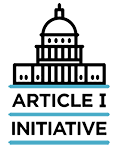Joel Nolette is a litigation attorney at Mintz Levin in Boston, and an active member of the Administrative Law & Regulation Practice Group, currently serving on its Executive Committee.
Mr. Nolette recently posted an article on the Least Dangerous Blog that makes an important contribution to the ongoing discussion and intensifying debate about the future of the Chevrondoctrine. The article is entitled “Chevron, Delegation, And Clear Statement Rules,” and it can be found at here.
Writing in a style that is both clear and engaging, Mr. Nolette crisply reviews the significant contribution made by Chevron and its progeny to the ascendancy of the consolidated administrative state. He presents a compelling critique of the Chevron line’s proposition that Congressional intent to delegate authority to executive branch agencies can legitimately be discerned even in statutory text that is ambiguous or silent on the subject.
Mr. Nolette effectively bolsters his critique of implicit delegation by contrasting the Chevron line of cases with many others in which the Court has held that findings of Congressional intent to alter traditional constitutional arrangements must be supported by clear and unambiguous statutory text, i.e., by plain statements of Congressional intent. Having drawn this distinction, Mr. Nolette asks “[w]hy, then, shouldn’t a clear statement rule govern…in lieu of Chevron” in cases involving the separation of powers among the branches of the federal government? Why, indeed?
Echoing Justice Kennedy’s recent admonition in Pereira v. Sessions, Mr. Nolette expresses his hope that the Court will soon take up a case that calls for the reconsideration of Chevron, and the careful consideration of how the rules for interpreting statutes and determining the authority of agencies might be better crafted to accord with the separation of powers mandated by the Constitution.
Mr. Nolette’s engaging blog post should make us all hope so, too.
* * *
J. Kennerly Davis, Jr. is a former Deputy Attorney General for Virginia, a member of the Administrative Law & Regulation Practice Group, and a contributor to the Regulatory Transparency Project.

 J. Kennerly Davis, Jr.
J. Kennerly Davis, Jr. 